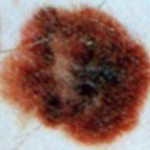-
Spring Break Brings Reminders of Skin Care Concerns
LA CROSSE, Wis. — Spring break is just around the corner for many students, and as they prepare for the sandy beaches of popular vacation destinations, some are making trips to the tanning salon first ... but at what cost?

“Tanning beds emit UVA rays which damage the cells in the skin that can lead to skin cancer.” says Mary Duh (Dew) from dermatology at Mayo Clinic Health System – Franciscan Healthcare. “Unfortunately, the increased use in tanning beds does create a high risk factor for melanoma.” Melanoma is the deadliest form of skin cancer that develops in the cells that produce melanin (the pigment that gives your skin color). “When exposed to UVA rays, DNA damage occurs and the skin darkens in order to prevent more damage. As this process keeps occurring there is a higher risk of melanoma due to the DNA damage.”
Ways to help prevent melanoma include:
- Avoid midday sun. Avoid the sun when its rays are the strongest. For most places, this is between about 10 a.m. and 4 p.m. Because the sun's rays are strongest during this period, try to schedule outdoor activities for other times of the day, even in winter or when the sky is cloudy.
- Wear sunscreen year-round. Use a broad-spectrum sunscreen with an SPF of at least 30. Apply sunscreen generously, and reapply every two hours — more often if you're swimming or perspiring.
- Wear protective clothing. Wear tightly woven clothing that covers your arms and legs and a broad-brimmed hat, which provides more protection than a baseball cap or visor does.
- Avoid tanning beds. Tanning beds emit UV radiation, which can increase the risk of skin cancer.
Below Richard Joseph, M.D., medical oncologist at Mayo Clinic in Florida, explains breakthroughs in treating melanoma that include a novel target agent and two new immune therapies.
View more of our skin cancer related videos.
Journalists: Sound bites with Dr. Joseph and b-roll of people at the beach are available in the downloads.








